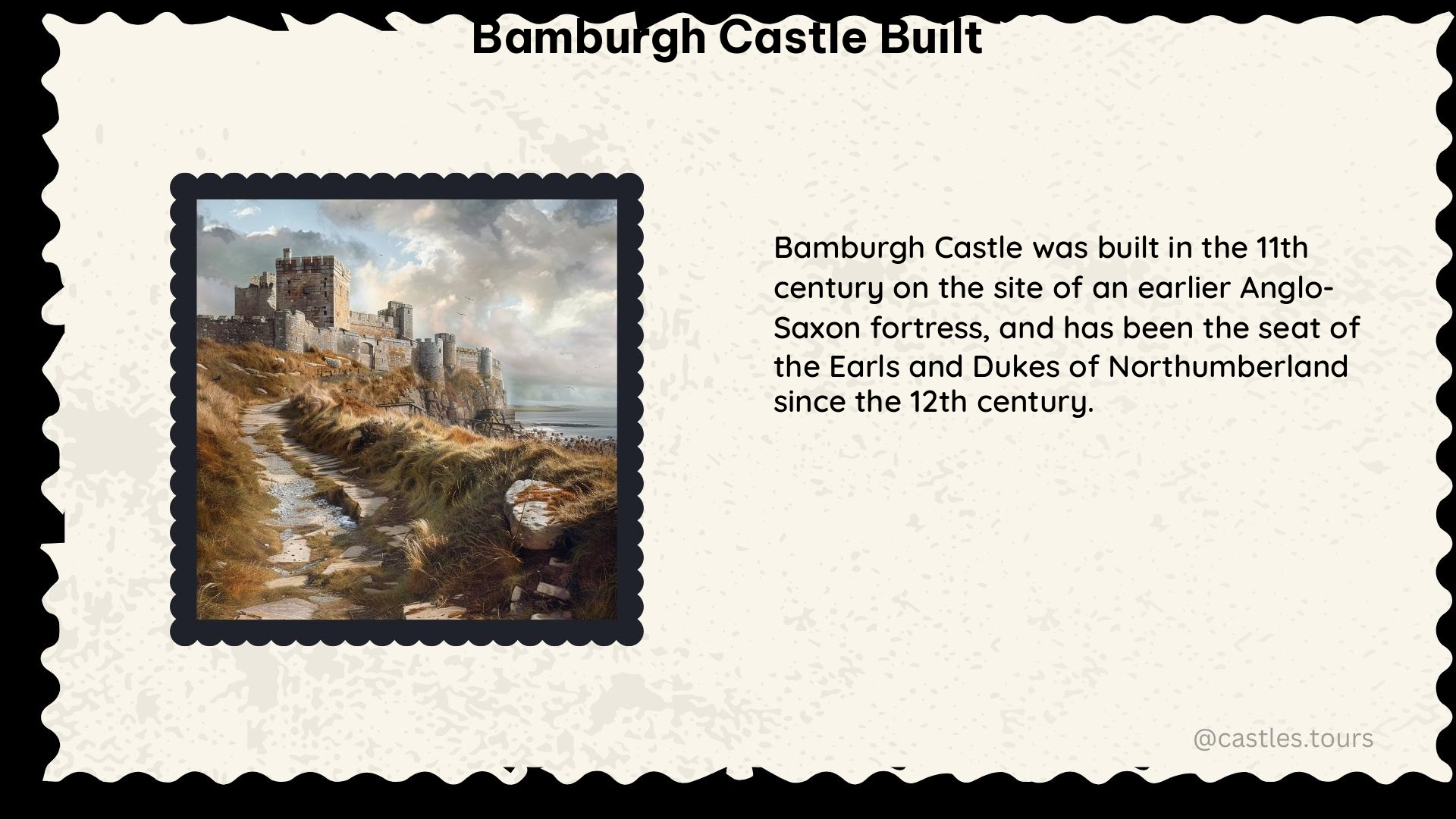Bamburgh Castle, a majestic fortress perched atop a rocky outcrop in Northumberland, England, has a rich and captivating history that spans centuries. From its origins as a Celtic Briton fort to its transformation into a Norman castle, this iconic landmark has witnessed the ebb and flow of power, the clash of cultures, and the enduring legends that have shaped the region.
The Storied Origins of Bamburgh Castle
The site of Bamburgh Castle was originally home to a fort of the indigenous Celtic Britons, known as Din Guarie, which may have been the capital of the kingdom of Bernicia from its foundation c. 420 to 547. In 547, the fort was captured by King Ida of Bernicia, marking the beginning of Anglo-Saxon control of the site.
The Norman Influence and the Castle’s Evolution

The Normans later built a new castle on the site, which forms the core of the present-day structure. The castle has been the site of many significant events throughout history, including serving as a royal palace where many of the Northumbrian kings were crowned and withstanding a siege by William II in 1095. The oldest parts of the castle above ground date from the time of Henry II, who became king of England in 1154.
Abandonment and Restoration
In the 16th and 17th centuries, the castle was largely abandoned until it was bought in 1704 by the bishop of Durham, Lord Crewe. It became the headquarters of a charity, which ran a free school, library, and infirmary, and parts of the castle were substantially rebuilt and restored in the 1750s.
The Armstrong Era and the Castle’s Transformation
In 1894, the site was sold to William Armstrong, an engineer, inventor, and armaments magnate, who transformed it into his vision of the archetypal castle and turned it into a combination of medieval fortress and Victorian mansion.
Bamburgh Castle Today: A Unique Blend of History and Modernity
Today, Bamburgh Castle is open to the public and spans nine acres of land on its rocky plateau. It is one of the largest inhabited castles in the country and houses a unique collection of artwork, ceramics, and objets d’art brought by William George Armstrong. The castle also has a rich history of ghost stories, legends, and myths and is believed to be the site of Sir Lancelot’s fictitious castle, Joyous Garde.
Practical Information
- Location: Bamburgh, Northumberland NE69 7DF
- Phone: 01668 214515
- Opening Hours:
- February to November: Daily, 10.00 – 17.00 (last admission 16.00)
- October to February: Weekends only, 11.00 – 16.30 (last admission 15.30)
- Accessibility: Prams and pushchairs are welcome in the grounds but not the interior, and only registered assistance dogs are permitted in the grounds.
Conclusion
Bamburgh Castle is a true gem of English history, a testament to the resilience and adaptability of a site that has witnessed the rise and fall of empires, the clash of cultures, and the enduring power of legend and myth. Whether you’re a history buff, a castle enthusiast, or simply someone in search of a captivating and immersive experience, a visit to Bamburgh Castle is sure to leave a lasting impression.
References:
– Britannica – Bamburgh Castle
– Bamburgh Castle Official Website
– Wikipedia – Bamburgh Castle
– Bamburgh Research Project
– Historic UK – Bamburgh Castle
